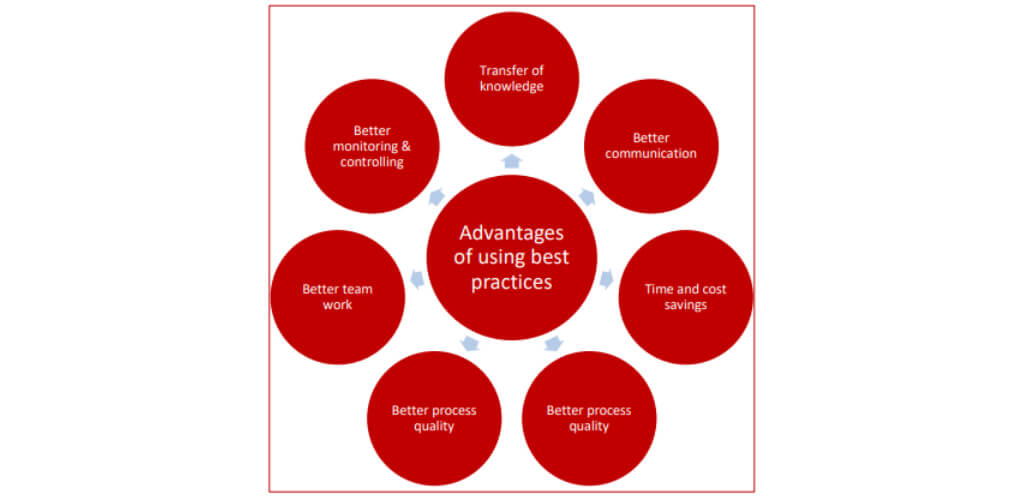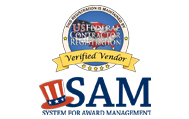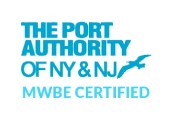
Project management best practices are helpful in achieving goals more efficiently by using standard Techniques, Methods, or Processes.
In project management, best Practice is a general term that includes:
Guidelines in project management are methods that can contribute to goal achievement when dealing with projects, whereas standards are expected to be objective, definitive, and robust. Guidelines issued by professional bodies are open to interpretation, but standards issued by specialized organizations are usually based on best practices and guidelines given by professional bodies.
Best Practices:
There are many advantages of using best practices. They not only advise you on how to be a successful project manager but also help you avoid any unexpected issue which usually is not thought of.
Plan the work by creating a Project Charter document.
planning is the most important part of a project. The project charter is the primary deliverable from the planning process and describes all aspects of the project at a high level. Once approved by the relevant stakeholders, it becomes the basis for the work to be performed.
Create a planning horizon.
A detailed project plan will have everything about how the project will be completed. So, more time and emphasis should be placed on creating the project plan with as many details as possible. High-level activities that were initially not clear need to be defined in more detail as their time frame gets closer.
Have a Project Kick-Off meeting.
Having a kick-off meeting is as important as carefully planning a project and documenting it. This meeting provides a stage to set the ground rules for the project and also get the views and opinions of the team and other stakeholders if they are in agreement with the process and procedures.
This will also help in:
Keep a watch on warning signs
The Project Manager should always keep a watch on warning signs which may push the project off course. These signs keep showing up in various forms and an effective project manager should be able to catch them in time and avoid them.
These warning signs include
These may seem small day-to-day operational issues but there might be a bigger problem lying behind them, which, if not caught and solved, might impact the entire project.
Ensure that the sponsor approves scope-change requests
This may sound very obvious but sometimes it gets missed which leads to bigger problems. However small the change request be, if its impacting the project constraints, it needs to go through a change request with formal approval from sponsor who is the only one who can add additional funding to cover the changes and know if the project impact is acceptable.
Safeguard against scope creep
Scope creep is a series of small changes in scope which are made to the project without using change management procedures. Individually these changes may not impact the project constraints but they can accumulate and have a significant impact on the overall project. Project managers should be diligent enough to lookout for the scope creep and make sure that any kind of changes go through a formal process which will help in identifying the necessary and unnecessary changes.
Identify risks during plannin
It is very crucial to identify risks and mitigations during the planning phase to minimize their impact on the project. And effective project manager may not be able to identify all the risks associated but should be able to identify most of the risks in the beginning of the project itself to be able to create a mitigation plan and make sure that they don’t become issues during the life of the project.
PMs can use information from similar projects if exists to be able to identify all the possible risks irrespective of the feeling of their occurrence in that specific project. PMs should also leverage multiple tools or build own tools like custom surveys and brainstorming to be able to identify potential risks.
Lookout for potential risks throughout the project.
Project manager’s role in risk management doesn’t end after planning phase. Risks are the biggest threats for a project and they can creep in at any stage of the project. So a PM should perform updated risk assessment in regular intervals to see that no new risks have surfaced which needs to be planned and mitigated properly.
Understand the difference between a risk and an issue.
It’s very common for project managers to mistake an issue for risk and vice versa. In both cases, it will become a bigger problem as the plan is different for managing risk compared to managing an issue. A risk is an event that has not happened yet and an issue is something that already has happened. An issue needs to be checked almost every day or week as it has already happened but risk needs to be checked only periodically. PMs should be able to differentiate between these two and take necessary action to solve or mitigate them accordingly.
Have a Project Post-Mortem meeting.
One of the most commonly ignored phases in project management is closing. Closing the project effectively not only improves the project quality but also helps other future projects to refer to this project for useful data like lessons learned.
Project post-mortem meeting with all stakeholders helps in identifying all the good and bad happened in the project and will help PM to document the lessons learned effectively. All the lessons learned should be placed in a central repository and made available for all PMs. Post-mortem should be scheduled right after the project is completed while the details are still fresh in memory and should be conducted in a constructive manner to identify the possible improvements if a similar project is undertaken in the future.
Post a comment Cancel reply
Related Posts
Unveiling the Power of Transformer Architecture in Large Language Models: From Training to Product Creation
Multicloud refers to using services from more than one public cloud provider at the same…
Multicloud
Multicloud refers to using services from more than one public cloud provider at the same…
EVOLUTIONOFAI IN HEALTH CARE
Artificial intelligence (AI) is reshaping healthcare, revolutionizing diagnostics, treatment, and patient care. Its applications range…
The Future of Enterprise Resource Planning: How Oracle Fusion is Changing the Game
Enterprise Resource Planning (ERP) systems have been a cornerstone of modern business operations for decades,…


















